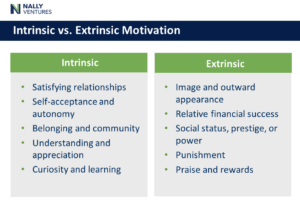
The Ins and Outs of Motivating Your Team
Part of the art of leadership is learning how and when to best motivate team members.
We all know what it feels like to be motivated—to feel that drive or desire that pushes us to do something or act in a certain way. Unfortunately, lack of motivation and engagement is an ongoing problem in today’s workplaces. Gallup’s annual State of the Workplace research found that in 2022, only about one fifth (21%) of workers globally are engaged at work. As a manager, team leader, or project manager, you can play a big role in turning that statistic around.
Let’s look at the two types of motivation: intrinsic and extrinsic. Both are important ways to drive behavior. When you understand the differences between them, you can also better understand how to motivate people.
-
Intrinsic motivation comes from within. It’s driven by an interest or enjoyment in the task itself. You do something because you want to do it and you find it personally rewarding.
-
- Example: Working hard on a project because you want to learn new skills.
-
-
Extrinsic motivation comes from outside. It’s driven by a desire to achieve a certain outcome or avoid a certain outcome. You do something because you want to get—or not get—something in return.
-
- Example: Working hard on a project to earn a bonus or avoid being fired.
-

Intrinsic motivation is a more effective long-term method for achieving goals and completing tasks. Extrinsic motivation is helpful when completing short-term tasks, especially if they are unpleasant. (Who hasn’t spurred themself on with the promise of a treat after finishing a workout or a household chore?)
But, extrinsic motivation alone is unlikely to help us truly excel, and it may eventually lead to burnout or lose effectiveness over time.
Balancing and tailoring these two types of motivation is key to effectively motivating yourself and your team. Too many extrinsic rewards can undermine our intrinsic interests, while some extrinsic rewards, like positive feedback, can encourage our intrinsic drivers.
The leader’s role
The Gallup research found that 70% of the variance in team engagement is determined solely by the manager! So, as a leader, you can really help move the needle on this.
By better understanding your team’s intrinsic motivators AND effectively communicating authentic company mission, vision, and values, you can also better align your people with company culture. This can create a culture of purpose and make work more meaningful.
How can you start building intrinsic motivation in your team? For that we turn to a concept called self-determination theory. Let’s dig into that next .
How can we help your leaders and business excel?
